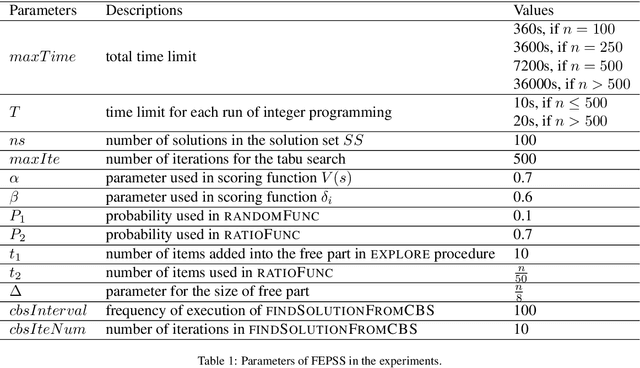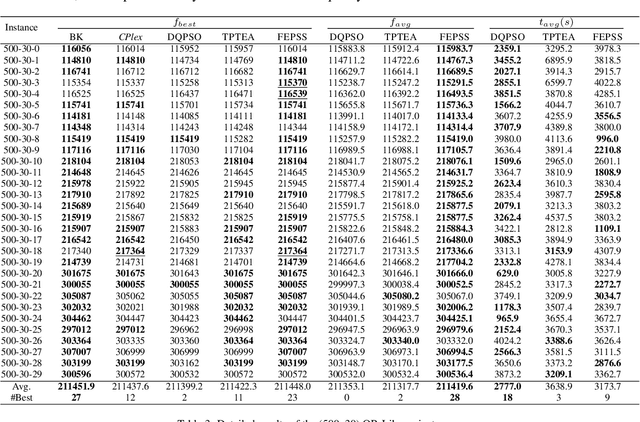Minghao Yin
Data-driven solar forecasting enables near-optimal economic decisions
Sep 08, 2025Abstract:Solar energy adoption is critical to achieving net-zero emissions. However, it remains difficult for many industrial and commercial actors to decide on whether they should adopt distributed solar-battery systems, which is largely due to the unavailability of fast, low-cost, and high-resolution irradiance forecasts. Here, we present SunCastNet, a lightweight data-driven forecasting system that provides 0.05$^\circ$, 10-minute resolution predictions of surface solar radiation downwards (SSRD) up to 7 days ahead. SunCastNet, coupled with reinforcement learning (RL) for battery scheduling, reduces operational regret by 76--93\% compared to robust decision making (RDM). In 25-year investment backtests, it enables up to five of ten high-emitting industrial sectors per region to cross the commercial viability threshold of 12\% Internal Rate of Return (IRR). These results show that high-resolution, long-horizon solar forecasts can directly translate into measurable economic gains, supporting near-optimal energy operations and accelerating renewable deployment.
Splat4D: Diffusion-Enhanced 4D Gaussian Splatting for Temporally and Spatially Consistent Content Creation
Aug 11, 2025Abstract:Generating high-quality 4D content from monocular videos for applications such as digital humans and AR/VR poses challenges in ensuring temporal and spatial consistency, preserving intricate details, and incorporating user guidance effectively. To overcome these challenges, we introduce Splat4D, a novel framework enabling high-fidelity 4D content generation from a monocular video. Splat4D achieves superior performance while maintaining faithful spatial-temporal coherence by leveraging multi-view rendering, inconsistency identification, a video diffusion model, and an asymmetric U-Net for refinement. Through extensive evaluations on public benchmarks, Splat4D consistently demonstrates state-of-the-art performance across various metrics, underscoring the efficacy of our approach. Additionally, the versatility of Splat4D is validated in various applications such as text/image conditioned 4D generation, 4D human generation, and text-guided content editing, producing coherent outcomes following user instructions.
Scalable Precise Computation of Shannon Entropy
Feb 03, 2025Abstract:Quantitative information flow analyses (QIF) are a class of techniques for measuring the amount of confidential information leaked by a program to its public outputs. Shannon entropy is an important method to quantify the amount of leakage in QIF. This paper focuses on the programs modeled in Boolean constraints and optimizes the two stages of the Shannon entropy computation to implement a scalable precise tool PSE. In the first stage, we design a knowledge compilation language called \ADDAND that combines Algebraic Decision Diagrams and conjunctive decomposition. \ADDAND avoids enumerating possible outputs of a program and supports tractable entropy computation. In the second stage, we optimize the model counting queries that are used to compute the probabilities of outputs. We compare PSE with the state-of-the-art probably approximately correct tool EntropyEstimation, which was shown to significantly outperform the existing precise tools. The experimental results demonstrate that PSE solved 55 more benchmarks compared to EntropyEstimation in a total of 441. For 98% of the benchmarks that both PSE and EntropyEstimation solved, PSE is at least $10\times$ as efficient as EntropyEstimation.
LatentArtiFusion: An Effective and Efficient Histological Artifacts Restoration Framework
Jul 29, 2024



Abstract:Histological artifacts pose challenges for both pathologists and Computer-Aided Diagnosis (CAD) systems, leading to errors in analysis. Current approaches for histological artifact restoration, based on Generative Adversarial Networks (GANs) and pixel-level Diffusion Models, suffer from performance limitations and computational inefficiencies. In this paper, we propose a novel framework, LatentArtiFusion, which leverages the latent diffusion model (LDM) to reconstruct histological artifacts with high performance and computational efficiency. Unlike traditional pixel-level diffusion frameworks, LatentArtiFusion executes the restoration process in a lower-dimensional latent space, significantly improving computational efficiency. Moreover, we introduce a novel regional artifact reconstruction algorithm in latent space to prevent mistransfer in non-artifact regions, distinguishing our approach from GAN-based methods. Through extensive experiments on real-world histology datasets, LatentArtiFusion demonstrates remarkable speed, outperforming state-of-the-art pixel-level diffusion frameworks by more than 30X. It also consistently surpasses GAN-based methods by at least 5% across multiple evaluation metrics. Furthermore, we evaluate the effectiveness of our proposed framework in downstream tissue classification tasks, showcasing its practical utility. Code is available at https://github.com/bugs-creator/LatentArtiFusion.
PBCounter: Weighted Model Counting on Pseudo-Boolean Formulas
Dec 26, 2023Abstract:In Weighted Model Counting (WMC), we assign weights to literals and compute the sum of the weights of the models of a given propositional formula where the weight of an assignment is the product of the weights of its literals. The current WMC solvers work on Conjunctive Normal Form (CNF) formulas. However, CNF is not a natural representation for human-being in many applications. Motivated by the stronger expressive power of pseudo-Boolean (PB) formulas than CNF, we propose to perform WMC on PB formulas. Based on a recent dynamic programming algorithm framework called ADDMC for WMC, we implement a weighted PB counting tool PBCounter. We compare PBCounter with the state-of-the-art weighted model counters SharpSAT-TD, ExactMC, D4, and ADDMC, where the latter tools work on CNF with encoding methods that convert PB constraints into a CNF formula. The experiments on three domains of benchmarks show that PBCounter is superior to the model counters on CNF formulas.
Spatial-Temporal Interplay in Human Mobility: A Hierarchical Reinforcement Learning Approach with Hypergraph Representation
Dec 25, 2023Abstract:In the realm of human mobility, the decision-making process for selecting the next-visit location is intricately influenced by a trade-off between spatial and temporal constraints, which are reflective of individual needs and preferences. This trade-off, however, varies across individuals, making the modeling of these spatial-temporal dynamics a formidable challenge. To address the problem, in this work, we introduce the "Spatial-temporal Induced Hierarchical Reinforcement Learning" (STI-HRL) framework, for capturing the interplay between spatial and temporal factors in human mobility decision-making. Specifically, STI-HRL employs a two-tiered decision-making process: the low-level focuses on disentangling spatial and temporal preferences using dedicated agents, while the high-level integrates these considerations to finalize the decision. To complement the hierarchical decision setting, we construct a hypergraph to organize historical data, encapsulating the multi-aspect semantics of human mobility. We propose a cross-channel hypergraph embedding module to learn the representations as the states to facilitate the decision-making cycle. Our extensive experiments on two real-world datasets validate the superiority of STI-HRL over state-of-the-art methods in predicting users' next visits across various performance metrics.
A Counterfactual Collaborative Session-based Recommender System
Feb 07, 2023



Abstract:Most session-based recommender systems (SBRSs) focus on extracting information from the observed items in the current session of a user to predict a next item, ignoring the causes outside the session (called outer-session causes, OSCs) that influence the user's selection of items. However, these causes widely exist in the real world, and few studies have investigated their role in SBRSs. In this work, we analyze the causalities and correlations of the OSCs in SBRSs from the perspective of causal inference. We find that the OSCs are essentially the confounders in SBRSs, which leads to spurious correlations in the data used to train SBRS models. To address this problem, we propose a novel SBRS framework named COCO-SBRS (COunterfactual COllaborative Session-Based Recommender Systems) to learn the causality between OSCs and user-item interactions in SBRSs. COCO-SBRS first adopts a self-supervised approach to pre-train a recommendation model by designing pseudo-labels of causes for each user's selection of the item in data to guide the training process. Next, COCO-SBRS adopts counterfactual inference to recommend items based on the outputs of the pre-trained recommendation model considering the causalities to alleviate the data sparsity problem. As a result, COCO-SBRS can learn the causalities in data, preventing the model from learning spurious correlations. The experimental results of our extensive experiments conducted on three real-world datasets demonstrate the superiority of our proposed framework over ten representative SBRSs.
Multi-View MOOC Quality Evaluation via Information-Aware Graph Representation Learning
Jan 01, 2023



Abstract:In this paper, we study the problem of MOOC quality evaluation which is essential for improving the course materials, promoting students' learning efficiency, and benefiting user services. While achieving promising performances, current works still suffer from the complicated interactions and relationships of entities in MOOC platforms. To tackle the challenges, we formulate the problem as a course representation learning task-based and develop an Information-aware Graph Representation Learning(IaGRL) for multi-view MOOC quality evaluation. Specifically, We first build a MOOC Heterogeneous Network (HIN) to represent the interactions and relationships among entities in MOOC platforms. And then we decompose the MOOC HIN into multiple single-relation graphs based on meta-paths to depict the multi-view semantics of courses. The course representation learning can be further converted to a multi-view graph representation task. Different from traditional graph representation learning, the learned course representations are expected to match the following three types of validity: (1) the agreement on expressiveness between the raw course portfolio and the learned course representations; (2) the consistency between the representations in each view and the unified representations; (3) the alignment between the course and MOOC platform representations. Therefore, we propose to exploit mutual information for preserving the validity of course representations. We conduct extensive experiments over real-world MOOC datasets to demonstrate the effectiveness of our proposed method.
Streaming Traffic Flow Prediction Based on Continuous Reinforcement Learning
Dec 24, 2022Abstract:Traffic flow prediction is an important part of smart transportation. The goal is to predict future traffic conditions based on historical data recorded by sensors and the traffic network. As the city continues to build, parts of the transportation network will be added or modified. How to accurately predict expanding and evolving long-term streaming networks is of great significance. To this end, we propose a new simulation-based criterion that considers teaching autonomous agents to mimic sensor patterns, planning their next visit based on the sensor's profile (e.g., traffic, speed, occupancy). The data recorded by the sensor is most accurate when the agent can perfectly simulate the sensor's activity pattern. We propose to formulate the problem as a continuous reinforcement learning task, where the agent is the next flow value predictor, the action is the next time-series flow value in the sensor, and the environment state is a dynamically fused representation of the sensor and transportation network. Actions taken by the agent change the environment, which in turn forces the agent's mode to update, while the agent further explores changes in the dynamic traffic network, which helps the agent predict its next visit more accurately. Therefore, we develop a strategy in which sensors and traffic networks update each other and incorporate temporal context to quantify state representations evolving over time.
Finding and Exploring Promising Search Space for the 0-1 Multidimensional Knapsack Problem
Oct 08, 2022



Abstract:The 0-1 multidimensional knapsack problem(MKP) is a classical NP-hard combinatorial optimization problem. In this paper, we propose a novel heuristic algorithm simulating evolutionary computation and large neighbourhood search for the MKP. It maintains a set of solutions and abstracts information from the solution set to generate good partial assignments. To find high-quality solutions, integer programming is employed to explore the promising search space specified by the good partial assignments. Extensive experimentation with commonly used benchmark sets shows that our approach outperforms the state of the art heuristic algorithms, TPTEA and DQPSO, in solution quality. It finds new lower bound for 8 large and hard instances
 Add to Chrome
Add to Chrome Add to Firefox
Add to Firefox Add to Edge
Add to Edge